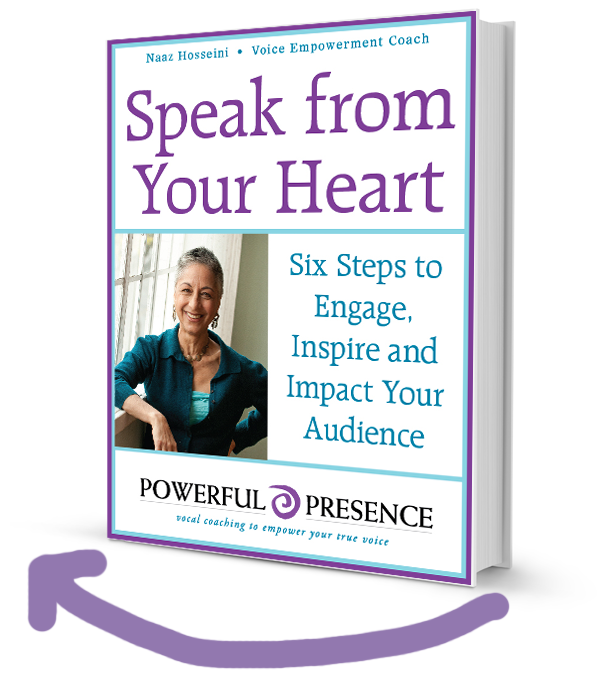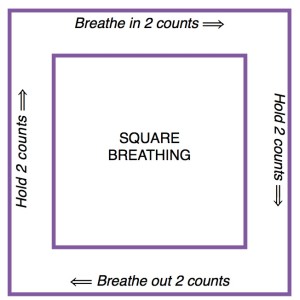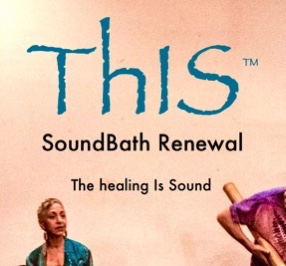Beginners Guide to Breathing
Overcoming Performance Anxiety Tip #2: Breathing –
 It’s a beautiful thing that we breathe automatically. We’re guaranteed enough breath to keep us going, usually. But when we’re faced with talking in front of a group, presenting an idea at work, or navigating a difficult conversation, our breathing gets, well, strange.
It’s a beautiful thing that we breathe automatically. We’re guaranteed enough breath to keep us going, usually. But when we’re faced with talking in front of a group, presenting an idea at work, or navigating a difficult conversation, our breathing gets, well, strange.
Have you noticed yourself get tight and constricted around your breathing when you’re on the spot?
And have you noticed how difficult it becomes to speak?
Thank goodness, even though our breathing is automatic, we also have the ability to regulate it on purpose. And regulating it is useful for relaxing ourselves and clearing our minds.
So let’s take a look at Performance Anxiety Tip #2 for three ways you can take charge of your breathing.
Find Performance Anxiety Tip #1: How to Have a Ground to Stand On HERE
Here are three simple exercises to get you breathing ease-fully.
Use one of them. Use all of them. And, don’t miss my nifty graphic for Exercise #3.
BREATHING EXERCISE #1: Noticing and Allowing
- Start by sitting or standing in a comfortable position, preferably in a quiet place. You can also practice this lying on your back on the floor, arms by your sides, legs relaxed open.
- Close your eyes to help bring your full attention to your breathing.
- Ground yourself. If you haven’t read my post about grounding, you can find it HERE.
- Without trying to change your breath in any way, let yourself first notice how far into your body it reaches. Does it get to your chest? To your belly? Deeper?
- Notice where your breath moves easily and where it may be stopped. One way to do this is to notice what parts of your body move as you breathe.
- Without forcing anything, invite your body to soften and allow your breath to expand a little more and travel a little deeper.
- If your breath comes into your chest and stops, gently invite it to come into your belly. If this doesn’t happen easily, don’t force it. Just invite.
- If your breath makes its way into your belly, gently encourage it to come deeper into your pelvis. Again, no forcing.
- If your breath eventually makes it’s way down to your pelvis, you can even invite it to come into your thighs. Of course, this is more an image than a physical actuality. But see what happens if and when you can allow your breath this much access.
- Don’t worry if steps 7-9 don’t happen for you right away. Stick with steps 1-6 and, over time with practice, you will find it easier to breathe more fully without force.
HINT: it’s tempting to use your muscles and your effort to force more air into your body, but this is counter-productive and could cause you to become more tense or to hyper-ventilate. It certainly won’t bring you more peace. Keep it easy.
- Try this and the following exercises when you’re not under pressure, preferably more than once, so you can get a sense of what’s possible when you don’t have to perform.
Then use it when you do have to perform.
BREATHING EXERCISE #2: The Breathing Tree
Remember the tree exercise for grounding yourself in my previous post, “How to Have a Ground to Stand On”? If you didn’t see it, you can read it HERE.
Let’s use it as a foundation for freeing up your breath.
- Ground yourself like a tree so you have a strong foundation that allows you to relax and make room to breathe.
- Inhale down the back of your body into your roots.
- Exhale up the front of your body as your roots continue to reach down into the earth.
- Give yourself a minute or two to stay with this image and follow the pattern of breathing from the top down, through your feet, and exhaling from the bottom up while maintaining your ground.
- You should notice your heart rate slowing down and your breathing becoming softer and easier.
HINT: we tend to breathe up on our inhale, shortening the breath and tightening the chest. Focus your attention softly on inhaling downward. Inhale down your back, relaxing (not collapsing) the front of your body. This is different and very calming.
BREATHING EXERCISE # 3: Square Breathing
Square breathing is an amazingly simple antidote for tension, anxiety, and fright. The more you practice it, the more effective it will be. Whenever possible, practice in a quiet place.
Then, when you have to speak, you can call on it no matter where you are and create the quiet place within.
- Sit comfortably in a chair with your spine long but not stiff.
- Inhale for 2 counts (about 2 seconds)
- Hold your breath for 2 counts
- Exhale for 2 counts
- Hold your breath for 2 counts
- Repeat the cycle… Inhale 2 counts, etc.
It’s called “square breathing” because each of the steps in the breathing cycle (steps 2 through 5) is like one side of a square.
When you first do this, go through the cycle only a few times, maybe four. And notice how your system calms down.
- If you practice this daily, you will find it becomes more and more effective at regulating your state.
- As you become comfortable doing it, you can increase the number of counts from 2 to 4, then 6, then 8 over time.
- You can also increase the number of breath cycles you do. Try 8 cycles, 12 cycles, etc.
Again, this is great to practice daily .
And, it is very effective when you use it in the heat of the moment, whether you’re tense, anxious or afraid. Whether you’re giving a talk or flying in a plane.
BONUS: If you can’t sleep at night, try square breathing to calm your system and let go of thoughts. Focus on your breathing, holding and counting.
NOTE: When you use square breathing to calm your nerves, keep in mind that a little nervousness is actually beneficial when you’re in performance mode. It heightens your energy and attention. Too much nervousness gets in your way. And these breathing exercises will help you regulate yourself.
Stay tuned for future Tips on Overcoming Performance Anxiety, including
- How to deal with the tendency to talk too fast
- How to help yourself look up and out at the audience rather than hiding in your script or staring at your shoes
- How to cope with distracted (otherwise occupied) audience members
© 2013 Naaz Hosseini. All Rights Reserved. Copying or resposting this content without written permission is strictly prohibited.
About the Author: Naaz Hosseini
 Naaz Hosseini is a singer, dancer, psychotherapist, and voice empowerment coach. She developed Powerful Presence™ coaching to help corporate and entrepreneurial women step into their vocal power to command the attention and respect they deserve. As a NYS Licensed Psychoanalyst and Qualified Gestalt Therapist, she supervises and trains mental health counselors at Teachers College Columbia University and therapists at the Gestalt Center for Psychotherapy and Training. She served as visiting faculty at the Harvard Graduate School of Education Project Zero Summer Institute for ten years where Howard Gardner has said, "With enthusiasm, I recommend Naaz Hosseini, a pioneer in using the voice and the body for understanding."
Naaz Hosseini is a singer, dancer, psychotherapist, and voice empowerment coach. She developed Powerful Presence™ coaching to help corporate and entrepreneurial women step into their vocal power to command the attention and respect they deserve. As a NYS Licensed Psychoanalyst and Qualified Gestalt Therapist, she supervises and trains mental health counselors at Teachers College Columbia University and therapists at the Gestalt Center for Psychotherapy and Training. She served as visiting faculty at the Harvard Graduate School of Education Project Zero Summer Institute for ten years where Howard Gardner has said, "With enthusiasm, I recommend Naaz Hosseini, a pioneer in using the voice and the body for understanding." 















Comments (2)
Trackback URL | Comments RSS Feed
Sites That Link to this Post